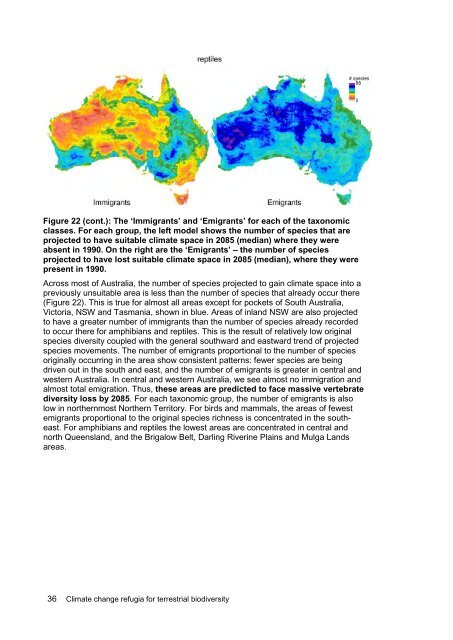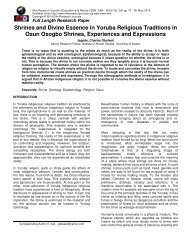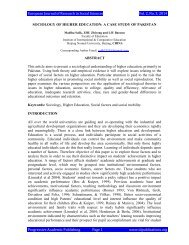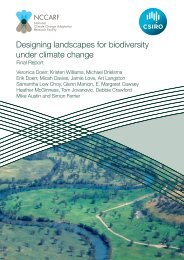Williams-Climate-change-refugia-for-terrestrial-biodiversity_0
Williams-Climate-change-refugia-for-terrestrial-biodiversity_0
Williams-Climate-change-refugia-for-terrestrial-biodiversity_0
You also want an ePaper? Increase the reach of your titles
YUMPU automatically turns print PDFs into web optimized ePapers that Google loves.
Figure 22 (cont.): The ‘Immigrants’ and ‘Emigrants’ <strong>for</strong> each of the taxonomic<br />
classes. For each group, the left model shows the number of species that are<br />
projected to have suitable climate space in 2085 (median) where they were<br />
absent in 1990. On the right are the ‘Emigrants’ – the number of species<br />
projected to have lost suitable climate space in 2085 (median), where they were<br />
present in 1990.<br />
Across most of Australia, the number of species projected to gain climate space into a<br />
previously unsuitable area is less than the number of species that already occur there<br />
(Figure 22). This is true <strong>for</strong> almost all areas except <strong>for</strong> pockets of South Australia,<br />
Victoria, NSW and Tasmania, shown in blue. Areas of inland NSW are also projected<br />
to have a greater number of immigrants than the number of species already recorded<br />
to occur there <strong>for</strong> amphibians and reptiles. This is the result of relatively low original<br />
species diversity coupled with the general southward and eastward trend of projected<br />
species movements. The number of emigrants proportional to the number of species<br />
originally occurring in the area show consistent patterns: fewer species are being<br />
driven out in the south and east, and the number of emigrants is greater in central and<br />
western Australia. In central and western Australia, we see almost no immigration and<br />
almost total emigration. Thus, these areas are predicted to face massive vertebrate<br />
diversity loss by 2085. For each taxonomic group, the number of emigrants is also<br />
low in northernmost Northern Territory. For birds and mammals, the areas of fewest<br />
emigrants proportional to the original species richness is concentrated in the southeast.<br />
For amphibians and reptiles the lowest areas are concentrated in central and<br />
north Queensland, and the Brigalow Belt, Darling Riverine Plains and Mulga Lands<br />
areas.<br />
36 <strong>Climate</strong> <strong>change</strong> <strong>refugia</strong> <strong>for</strong> <strong>terrestrial</strong> <strong>biodiversity</strong>






